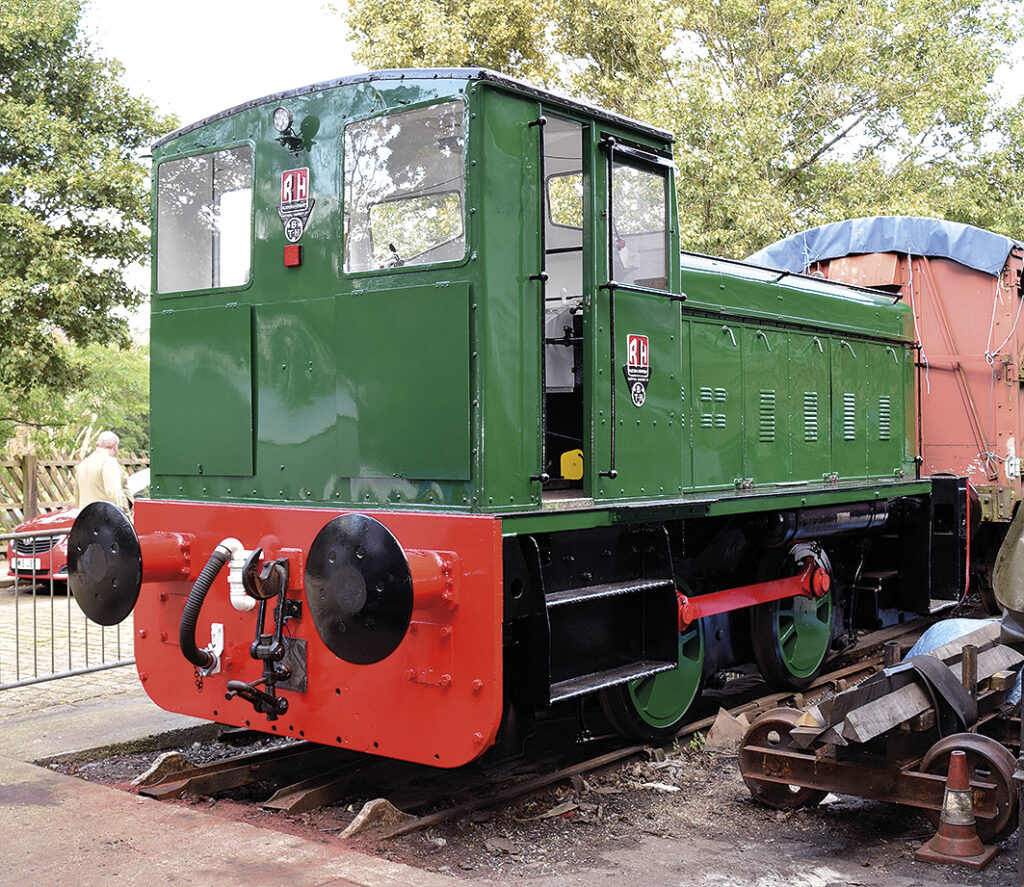
‘James’ was built in 1959 by the Lincoln locomotive company, Ruston & Hornsby of Lincoln, for the steel company Stewarts & Lloyd, Ltd. of Bilston, Staffordshire, where it received its name. It continued in service until being sold in the mid-1980s for scrap.

Like many preserved steam and diesel locomotives, fate played its part in saving this locomotive. The purchaser of the engine was a company that specialised in renovating diesel engines. They intended to fully overhaul the engine and sell it to industrial use at a profit. When no buyer could be found, however, the company offered ‘James’ to the Heritage Railway Sector at a fraction of the cost it took to return it to full working order. The locomotive was purchased by a private member of the Bahamas Locomotive Society and arrived on the Keighley &Worth Valley Railway in 1990.
Data File
Built: 1959 Lincoln
Engine: Ruston & Hornsby 165h.p. diesel coupled to a DC generator
Transmission: Single traction motor.
Weight: 28 Tons
Tractive Effort: 16,700 lbf.
Max Speed: 17½, mph
‘James’ is a 4-coupled locomotive built by Ruston & Hornsby of Lincoln under their works number 431763 to their type ‘165DE’. Thelocomotiveincorporatesa6Cylinder, Ruston&Hornsby, 165h.p. diesel engine coupled to a DC generator feeding onto a single traction motor.
Speed control is by engine speed and excitation on the generator. Speed and air-brake controls are duplicated on each side of the driving cab allowing the locomotive to be driven from either side. A more unusual feature of this engine is that it does not require batteries to start. The engine is started by a hand-cranked petrol engine (housed in the engine compartment) which then creates air pressure from which the diesel engine is turned to life.
When new, the locomotive was delivered to the steel company Stewarts & Lloyd, Ltd. of Bilston, Staffordshire. It was here that the engine was named ‘James’, and it continued in service until being sold in the mid-1980’s for scrap. Like many preserved steam and diesel locomotives, fate played itspart in saving this locomotive. The purchaser of the engine was a company that specialised in the renovation of diesel locomotives. They intended to fully overhaul the engine and sell it back into industrial use at a profit. When no buyer could be found, however, the company offered ‘James’ to the heritage railway sector at a fraction of the cost it took to return it to full working order.
The locomotive was purchased by a private member of the Bahamas Locomotive Society and arrived at Ingrow on the Keighley &Worth Valley Railway in 1990.

